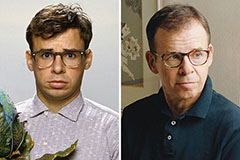Increased Coverage, Same First-Class Quality
Celebrated for its devotion to excellence, MyCigarsASAP.com features an exclusive assortment of premium cigars from the most prominent brands in the industry. As it enters West Hollywood, the company proceeds to offer immediate availability of a wide range of luxury cigars, sustaining the same rigorous quality control standards that have made it a reliable choice among cigar enthusiasts.
Cigar Delivery West Hollywood
CALL (800) 654-7959
Cigar lovers in West Hollywood can opt for popular brands such as: • Arturo Fuente – Featuring a diverse range of skillfully produced cigars. • Montecristo – Renowned for its refined, well-rounded concoctions that suit different preferences. • Cohiba – Known worldwide for providing a deep, vigorous smoking experience. • Davidoff – A symbol of sophistication, delivering cigars of exceptional consistency and excellence. • My Father's Cigars – Offering powerful, profound tastes that are inspired by Cuban cigar heritage. • Ashton – Esteemed for its refined, polished taste, handmade from the superior Dominican tobaccos. • Padron – Esteemed for its full-bodied flavors and exemplary craftsmanship, including the much-coveted 1964 Anniversary Series. • Romeo y Julieta – A classic choice recognized for its balanced flavors and stable quality.
This wide assortment makes certain that MyCigarsASAP.com serves a wide variety of preferences, with cigars supplied by reputable regions like Nicaragua, the Dominican Republic, and Honduras.
Focus on Freshness and Excellence
Grade is at the foundation of MyCigarsASAP.com’s procedures. To ensure that each cigar arrives in perfect condition, the company adopts strict quality control measures, including carefully monitored storage and personally chosen inventory. Every request is treated with care, guaranteeing that the cigars are dispatched fresh and tasty. As well, their crew of cigar aficionados is on standby to provide individualized recommendations, delivering a personalized and informative experience for each customer.
Rapid and Efficient Delivery to West Hollywood
Through this latest increase in service, MyCigarsASAP.com reinforces its standing as one of the speediest premium cigar delivery services locally. Whether for a unexpected occasion, a set occasion, or a relaxing evening in, community members in West Hollywood can now take advantage of prompt cigar deliveries within 30 to 60 minutes of placing their order. This swift delivery provides a heightened convenience to West Hollywood’s cigar enthusiasts.
Cigar Delivery West Hollywood
CALL (800) 654-7959
About MyCigarsASAP.com
MyCigarsASAP.com is a California-based cigar delivery service dedicated to providing prompt, dependable access to a first-rate lineup of cigars. With a attention to quality, freshness, and personalized service, the company has established itself as a reputable source for cigar connoisseurs region-wide. Now, with enlarged service to West Hollywood, MyCigarsASAP.com persists in pioneering the delivery of superior cigars rapidly and meticulously.
For more intel or to submit an order for prompt delivery, call (800) 654-7959.
Cigar Roots and Chronicle: A Voyage Through Centuries
Cigars, often linked with opulence, heritage, and craftsmanship, carry a abundant heritage tracing back generations. The advancement of cigars represents the convergence of cultures, navigation, and trade transactions. This piece studies the compelling roots and past of cigars, documenting their progression from original practices in the Americas to emerging as a world-spanning icon of sophistication.
The Historic Dawn: Cigars in Pre-Columbian Cultures Cigars have their first beginnings in the indigenous peoples of the Americas. Historic communities, including the Mayans, Aztecs, and Taínos, are acknowledged to have partaken of bundled tobacco fronds. Excavation relics display scenes of Mayans inhaling on porcelain objects belonging to no later than the 10th century. The title “cigar” possibly emerges from the Mayan expression “sikar,” which indicates to smoke.
In these early societies, tobacco was not only a enjoyable product but also held spiritual significance. Healers and tribal leaders inhaled tobacco during ritualistic rites, thinking it allowed them to converse with the spirit world. Tobacco was also used curatively, offering mitigation for various sicknesses, such as tensions and stomach issues.
Tobacco’s Emergence to Europe: Columbus and the New World The European history of cigars originated with Christopher Columbus’s appearance in the Americas in 1492. His crew encountered native people using twists of withered tobacco leaves, an unknown practice that interested them. Columbus and his men transported bits back to Spain, marking the beginning of Europe’s connection with tobacco.
The practice of puffing quickly propagated across Europe. Spaniards welcomed it first, and by the 16th century, tobacco use was popular among European elites. Early cigars were primitive in comparison to modern versions, but their attraction spread to Italy, Portugal, and France. Tobacco was also viewed as a panacea, assumed to cure a host of ailments from common colds to fatigue.
Cuban Influence: Birthplace of the Modern Cigar Cuba’s position in cigar chronicle is essential, turning tobacco from a local commodity into a global phenomenon. In the 17th century, Cuba developed into the center of cigar production due to its suitable climate and lush soil, particularly in the Vuelta Abajo region. Cuban cigars quickly earned a status for unequaled quality and craftsmanship.
By the 1800s, the Cuban cigar industry was blooming, and the term “Havana cigar” turned into synonymous with excellence. Experienced artisans, known as torcedores, produced cigars by hand, refining techniques that prevail largely unchanged today. Many of the world’s most celebrated cigar brands, such as Montecristo, Cohiba, and Romeo y Julieta, owe their genesis to this era.
The Spread to North America and Europe The craving for cigar s increased beyond Cuba’s borders by the 18th and 19th centuries. Tobacco plantations emerged appearing in other Caribbean islands, such as the Dominican Republic and Jamaica, as well as parts of Central America, including Honduras and Nicaragua. These regions stand as cigar strongholds today, each contributing special characteristics to their products.
In Europe, Spain and the Netherlands became major consumers and producers of cigars. The Dutch instituted a robust cigar industry, importing Cuban tobacco and melding it with indigenous leaves to create individual styles. Meanwhile, cigar smoking in the United States turned into aligned with status and masculinity. The rise of industrialization saw cigar factories spread across the U.S., particularly in Florida, where Cuban immigrants carried their mastery and traditions.
Cigars and Social Status: From Aristocracy to the Everyday Man Throughout history, cigars have been closely connected to status, wealth, and celebration. By the 19th century, cigars were a regular among European and American aristocrats. Monarchs such as King Edward VII of England were well-known cigar enthusiasts, further enhancing their popularity among the elite.
In the United States, cigars became affiliated to political power and business success. Industrial magnates like Andrew Carnegie and John D. Rockefeller were often photographed puffing cigars, solidifying their image as emblems of wealth. Prominent figures such as Winston Churchill famously endorsed cigars, boosting to their prestige.
However, cigars were not particular to the upper class. The growth of the cigar industry led to the production of inexpensive options, making cigars attainable to the working class. Cigar clubs and lounges arose, offering venues where people from all walks of life could indulge in a smoke.
The Cuban Embargo and the Rise of New Markets The Cuban cigar industry encountered a major change in 1962 when the U.S. government, under President John F. Kennedy, enacted a trade embargo on Cuba. Cuban cigars, previously a standard among American cigar lovers, became illegal in the U.S., creating both deficiency and aura around them. As a result, many Cuban cigar makers left to neighboring countries like the Dominican Republic, Nicaragua, and Honduras, where they continued their trade using Cuban-seed tobacco.
This geopolitical shift introduced new markets and aided to the rise of premium cigars outside Cuba. Today, cigars from these regions are esteemed for their quality, challenging Cuban cigars in flavor, construction, and diversity.
Cigars in Popular Culture and Cinema Cigars have solidified their place in popular culture, often symbolizing power, victory, and sophistication. Hollywood championed the cigar as an icon, featuring it prominently in films. Characters like Tony Montana in Scarface and Winston Churchill in The Darkest Hour copyright the link between cigars and authority.
Moreover, cigars are a staple at celebrations, marking occasions such as weddings, business deals, and the birth of children. Cigar lounges and clubs continue to serve as hangouts for socializing and networking, enhancing their cultural relevance.
The Modern Cigar Renaissance The late 20th and early 21st centuries have observed a resurgence of cigar culture. The 1990s “Cigar Boom” in the U.S. saw a resurgent interest in premium cigars, with new connoisseurs joining the scene. Craftsmanship, diversity in blends, and specialized techniques have propelled the modern cigar renaissance.
Independent cigar brands have achieved popularity, offering distinct blends that captivate to a increasing demographic of younger smokers. Additionally, the rise of cigar lounges and online cigar shops has made it more straightforward for consumers to investigate different varieties from around the world. Events like Cigar Aficionado’s Big Smoke further display the persistent attraction of cigars in contemporary culture.
Cigars and Sustainability: The Future of the Industry As the cigar industry transforms, sustainability has become a focus. Environmental factors, including climate change and deforestation, alter tobacco cultivation. Many cigar manufacturers are adopting eco-friendly practices by using sustainable farming methods and supporting reforestation efforts.
Fair labor practices are also advancing, with companies guaranteeing fair wages and safe working conditions for the farmers and artisans involved in cigar production. The attention on sustainability attempts to maintain the industry’s legacy while serving the expectations of socially conscious consumers.
Conclusion: A Legacy of Tradition and Craftsmanship From the holy traditions of indigenous tribes to the sumptuous lounges of today, cigars have journeyed a long and legendary path. Each drag of a premium cigar contains with it the legacy of generations of artistry, tradition, and cultural significance. Whether relished by royalty, industrial tycoons, or modern-day lovers, cigars continue to stand for more than just tobacco—they represent a lifestyle, a celebration, and a connection to history.
As the world of cigars changes, one thing persists constant: the charm of kicking back, lighting up, and savoring the skillful combination of tradition and innovation encased in each leaf.
The Cigar Production Method: A Expedition from History to Contemporary Era
The Cigar Manufacturing Process: The Journey from Past to Present
Introduction
Such a cigar, a single timeless symbol of grandeur and grace, has its own rich history that traverses centuries and continents. From its early origins among aboriginal peoples to its modern incarnation as the global industry, the process of crafting a cigar is a blend of art, research, and tradition. This article dives into the intricate journey of cigar manufacturing, assessing the methods of the past with those of today, and showcasing how innovation and heritage interact in this compelling craft.
I. Historical Overview of Cigar Manufacturing
A. Early Origins of Cigars
The history of cigars traces back to the indigenous peoples of the Caribbean and Mesoamerica, who tended tobacco and used it in religious and medicinal practices. When Christopher Columbus arrived in the New World in 1492, he and his crew perceived the native Taíno people of Cuba and Hispaniola wrapping and smoking dried tobacco leaves. This practice captivated the Europeans, who brought tobacco back to the Old World, where it quickly attained popularity.
B. Traditional Cigar-Making Techniques
1. Tobacco Cultivation
In the early days, tobacco cultivation was a manual and labor-intensive process. Farmers counted on natural cycles and traditional knowledge to grow tobacco plants. The seeds were planted by hand, and the plants needed meticulous care to thrive.
2. Leaf Selection and Fermentation
After harvesting, the tobacco leaves underwent a natural air-curing process. They were mounted in curing barns to dry slowly, enabling the chlorophyll to break down and the leaves to develop their characteristic brown color. Fermentation ensued, where the leaves were piled in piles called pilones. The natural heat generated by microbial activity decreased harshness and brought out the rich flavors.
3. Rolling Methods
Cigar rolling was an craft passed down through generations. Skilled artisans, known as torcedores, shaped cigars entirely by hand. They selected filler leaves, tied them with a binder leaf, and wrapped the bunch with a high-quality wrapper leaf. This meticulous process called for precision and an eye for quality.
C. The Role of Cuban Cigar Tradition
Cuba became equivalent with premium cigars due to its ideal climate and soil conditions, particularly in the Vuelta Abajo region. The country's cigar-making techniques created the standard for quality and craftsmanship. Cuban cigars were widely desired, and the methods developed there guided cigar production worldwide.
II. Modern Cigar Manufacturing Process
A. Advances in Tobacco Cultivation
1. Genetic Selection
Modern agriculture has introduced genetic selection to augment tobacco plant qualities. Scientists and farmers collaborate to develop tobacco strains resistant to diseases and pests, and with desired flavor profiles. This produces more consistent and high-quality crops.
2. Modern Farming Techniques
Today, tobacco farming applies advanced irrigation systems, soil management, and crop rotation to maximize yield and quality. Precision agriculture technologies, such as GPS mapping and drones, help monitor plant health and optimize resource use.
B. Leaf Processing Today
1. Fermentation Methods
While the fundamental principles of fermentation continue, modern facilities oversee temperature and humidity with greater precision. This control affirms uniformity and improves flavor development. Some producers employ multiple fermentation cycles to refine the tobacco further.
2. Aging and Storage
Post-fermentation aging has transformed into a critical step. Tobacco leaves are aged in controlled environments, sometimes for several years, to mellow the tobacco and enhance complexity. Aging rooms are equipped with technology to preserve ideal conditions.
C. Contemporary Cigar Rolling
1. Machine-Made vs. Hand-Rolled Cigars
The 20th century witnessed the emergence of mechanization to cigar production. Machine-made cigars implement homogenized tobacco leaf (HTL) binders and wrappers, allowing mass production at lower costs. However, premium cigars persist to be navigate here hand-rolled, keeping the artisanal tradition.
2. Quality Control
Modern factories adopt strict quality control measures. This includes regular inspections, draw testing to confirm proper airflow, and sensory evaluations. Technology facilitates but does not supersede the expertise of seasoned inspectors.
D. Innovations in Packaging and Distribution
Advancements in packaging materials guard cigars from environmental factors during shipping. Vacuum-sealed packaging, humidification devices, and sophisticated distribution logistics secure cigars reach consumers in optimal condition.
III. Comparing Past and Present Methods
A. Technological Advances
Technology has optimized many aspects of cigar manufacturing without lessening the importance of skilled labor. Mechanization takes care of repetitive tasks, while artisans devote themselves on quality and craftsmanship.
B. Maintaining Tradition in a Modern Industry
Despite technological progress, the essence of cigar-making persists rooted in tradition. Many producers focus on hand-rolled methods and traditional fermentation to sustain authenticity and address aficionados who admire heritage.
C. Challenges and Opportunities
The industry experiences challenges like regulatory changes, health concerns, and market fluctuations. However, opportunities present themselves from expanding global markets, premiumization trends, and consumer interest in artisanal products.
IV. The Art of Cigar Making: Preserving Craftsmanship
A. The Role of the Torcedor (Cigar Roller)
Torcedores are revered figures in cigar factories. Their expertise defines the cigar's construction and performance. Training to become a master roller can take years, showing the complexity of the craft.
B. Apprenticeship and Skills Transfer
Many factories run apprenticeship programs to impart skills to new generations. This affirms the survival of traditional techniques and sustains high standards in production.
C. Cultural Significance
Cigar-making is more than an business; it's a cultural heritage in regions like Cuba, the Dominican Republic, and Nicaragua. Festivals, museums, and tours observe this legacy, pulling in enthusiasts worldwide.
The cigar manufacturing process is a captivating blend of time-honored traditions and modern innovations. While technology has introduced efficiencies and consistency, the heart of cigar-making lies in the hands of skilled artisans who maintain a legacy that bridges centuries. Appreciating this journey deepens the appreciation of cigars, not just as products but as representations of cultural heritage and craftsmanship.
 Rick Moranis Then & Now!
Rick Moranis Then & Now! David Faustino Then & Now!
David Faustino Then & Now! Andrew McCarthy Then & Now!
Andrew McCarthy Then & Now! Pierce Brosnan Then & Now!
Pierce Brosnan Then & Now! Teri Hatcher Then & Now!
Teri Hatcher Then & Now!